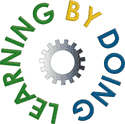| ELECTRICAL COURSES | INSTRUMENTATION COURSES | MECHANICAL COURSES |
TECHNICAL TRAINING SOLUTIONS |
 |
|||
| ELECTRICAL COURSES | INSTRUMENTATION COURSES | MECHANICAL COURSES | ||
TECHNICAL TRAINING SOLUTIONS |
 |
|||
| ELECTRICAL COURSES | INSTRUMENTATION COURSES | MECHANICAL COURSES | ||